Abstract
The effects of fixation on the cell volume of marine heterotrophic nanoflagellates and planktonic ciliates were investigated. Decreases in cell volume depended on the combination of the protozoan taxa and the particular fixative. For a particular fixative and protozoan species, degree of shrinkage was independent of physiological state. The volume of fixed cells was found to be approximately 20 to 55% lower than the cell volume of live organisms. For the heterotrophic microflagellates, the fixatives ranked, in order of decreasing effect on cell volume, as glutaraldehyde, formaldehyde, acid Lugol's solution, and modified van der Veer solution. With oligotrichous ciliates and a tintinnid ciliate, formaldehyde caused less shrinkage than glutaraldehyde or acid Lugol's solution. With the aldehyde fixatives, the microflagellates were found to shrink more than the ciliates. Differential effects of fixation on cell volumes may result in an underestimation of the biomass of certain protozoan taxa in natural samples.
Full text
PDF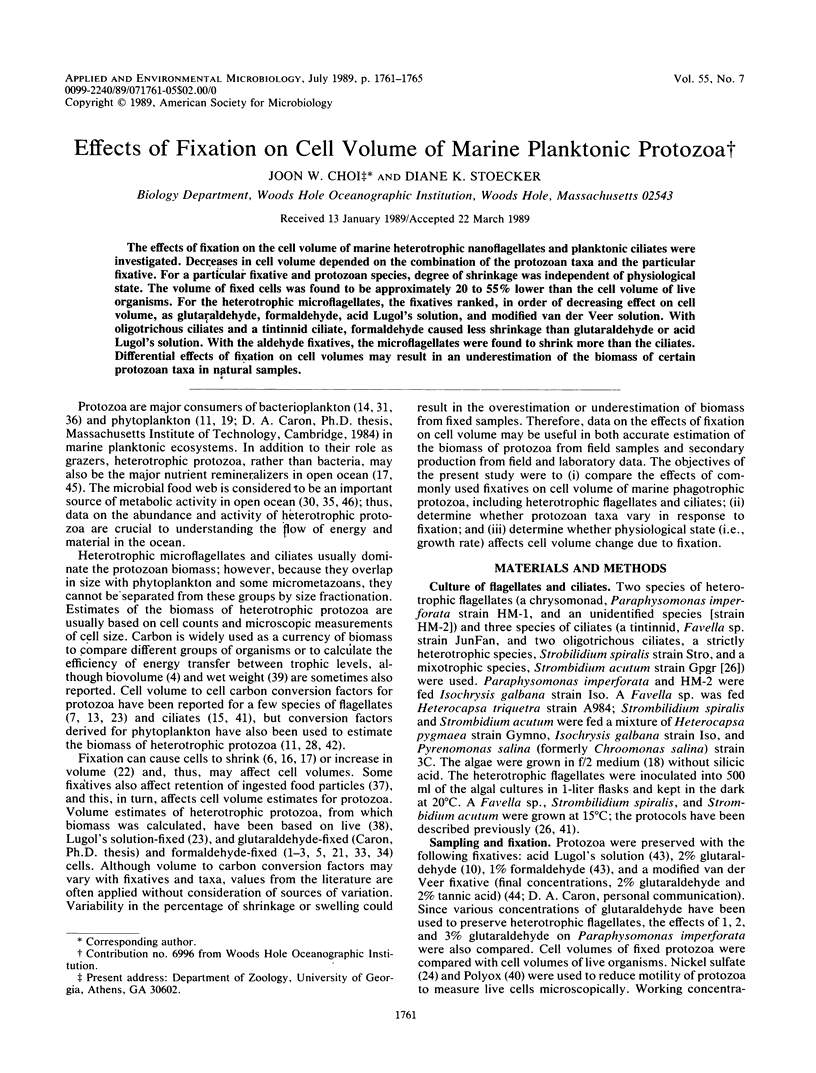
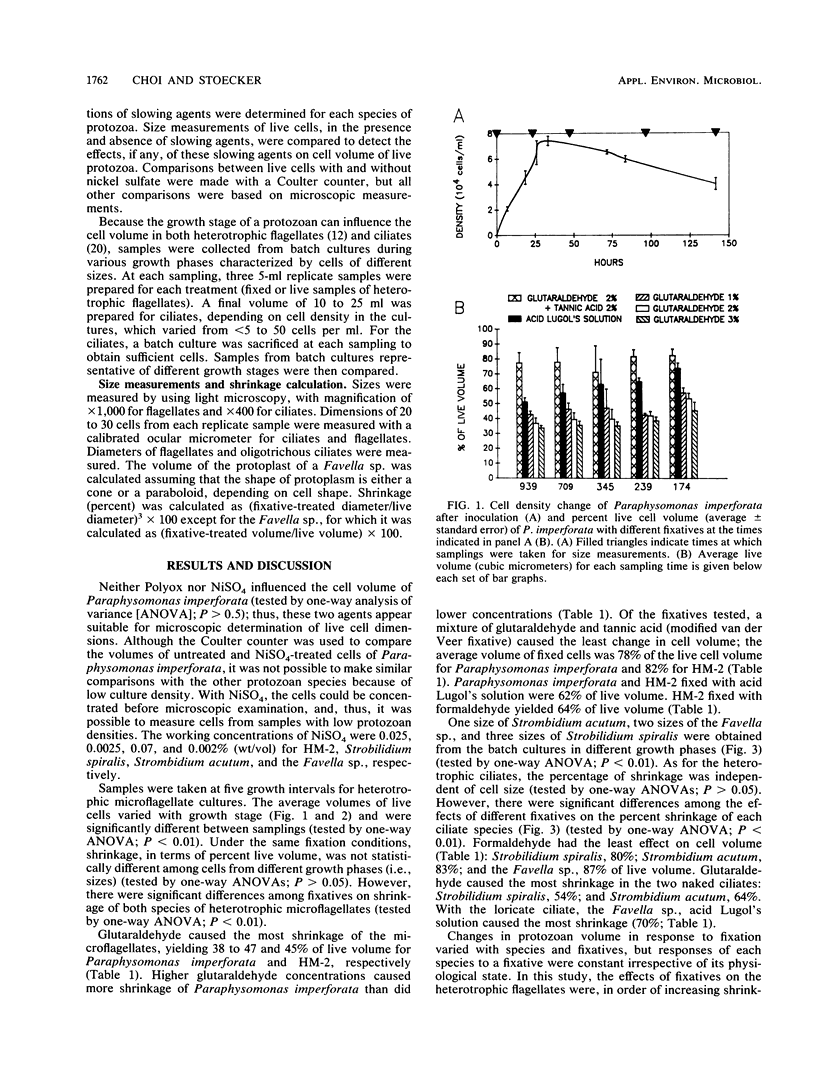
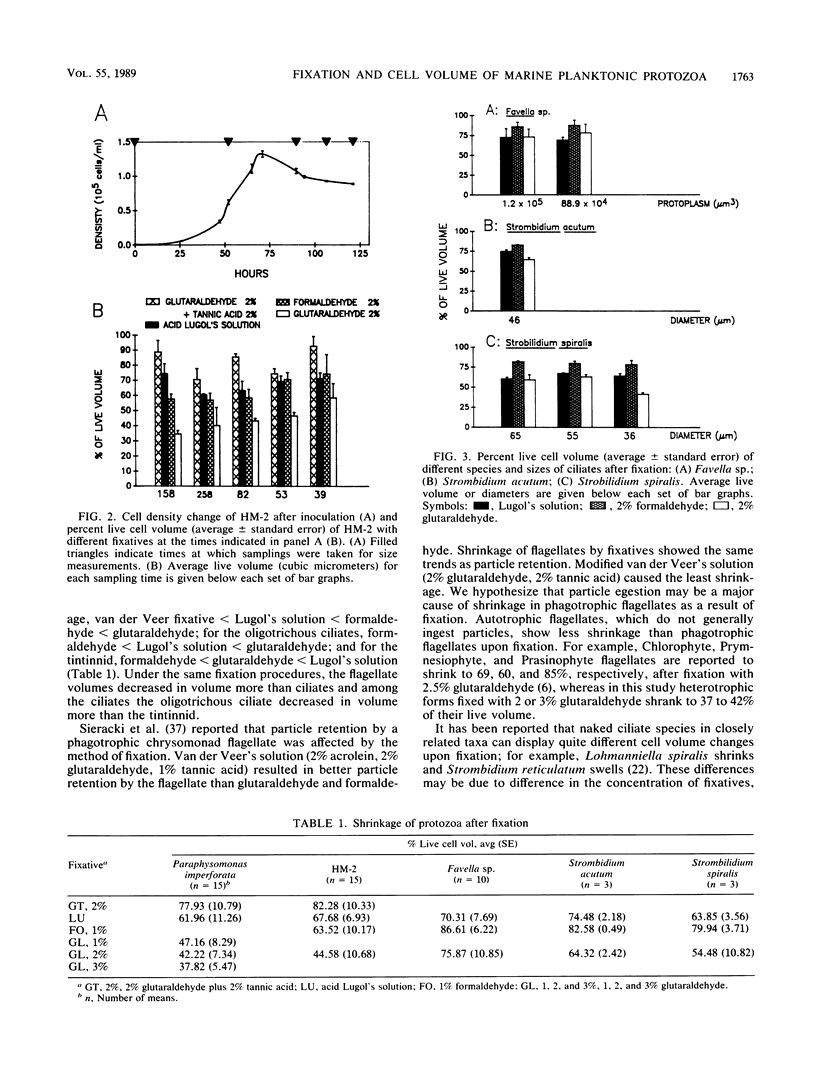
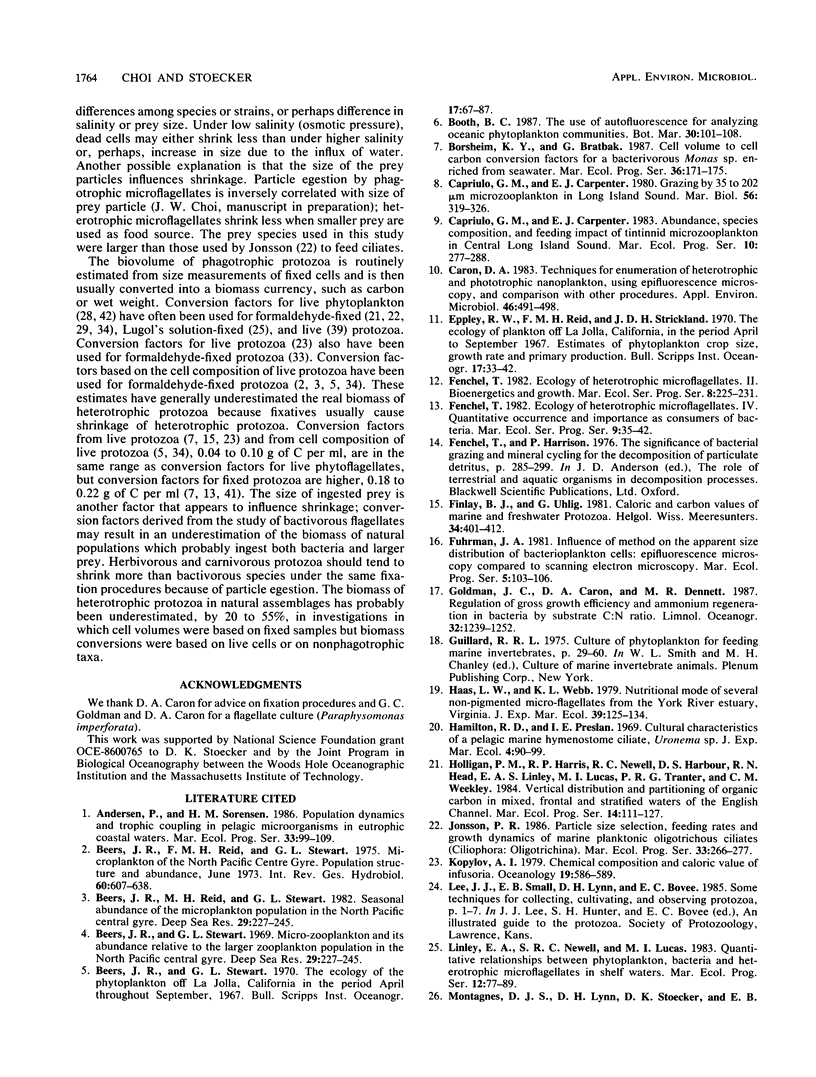
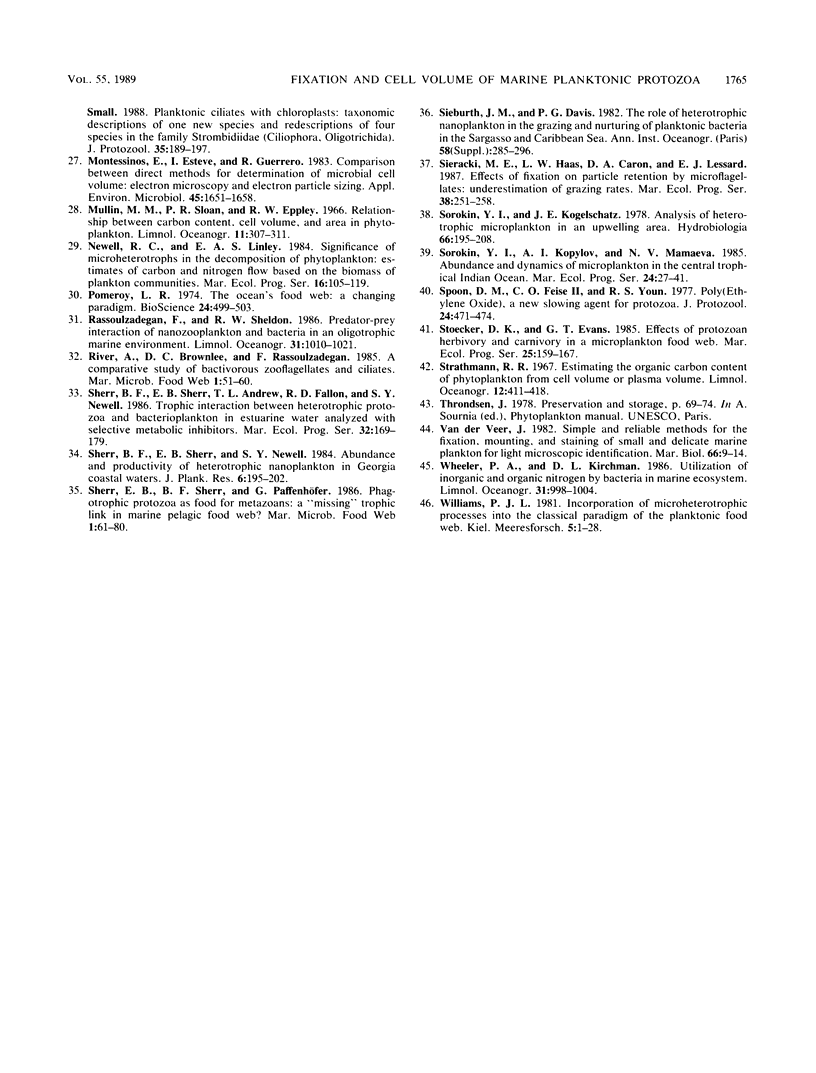
Selected References
These references are in PubMed. This may not be the complete list of references from this article.
- Caron D. A. Technique for enumeration of heterotrophic and phototrophic nanoplankton, using epifluorescence microscopy, and comparison with other procedures. Appl Environ Microbiol. 1983 Aug;46(2):491–498. doi: 10.1128/aem.46.2.491-498.1983. [DOI] [PMC free article] [PubMed] [Google Scholar]
- Montesinos E., Esteve I., Guerrero R. Comparison between direct methods for determination of microbial cell volume: electron microscopy and electronic particle sizing. Appl Environ Microbiol. 1983 May;45(5):1651–1658. doi: 10.1128/aem.45.5.1651-1658.1983. [DOI] [PMC free article] [PubMed] [Google Scholar]
- Spoon D. M., Feise CO I. I., Youn R. S. Poly(ethylene oxide), a new slowing agent for protozoa. J Protozool. 1977 Aug;24(3):471–474. doi: 10.1111/j.1550-7408.1977.tb04779.x. [DOI] [PubMed] [Google Scholar]


